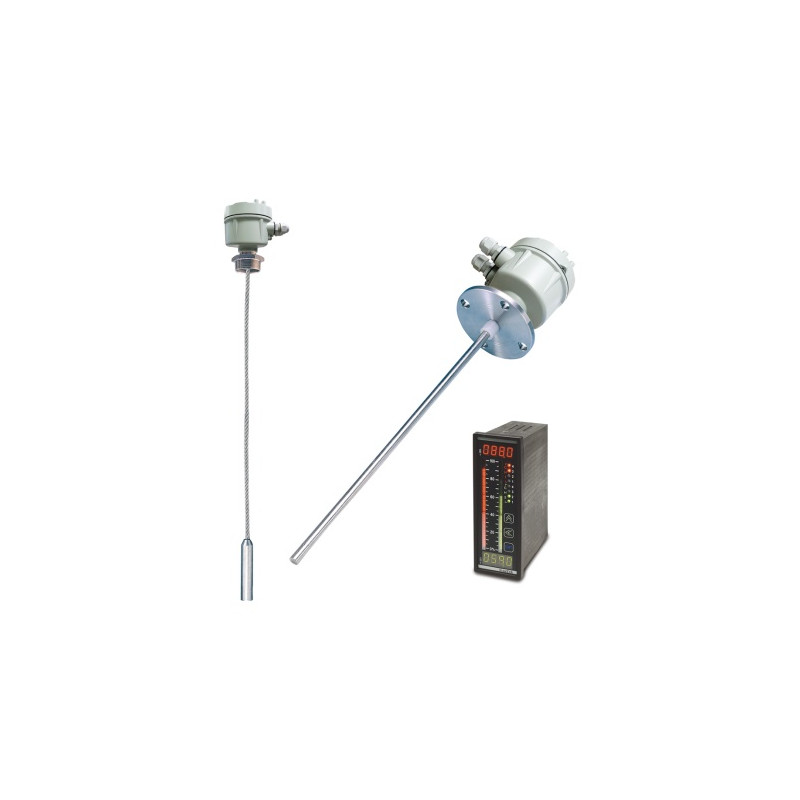

Vous devez être connecté
Category


Les photos sont à titre informatif uniquement. Voir les spécifications du produit
please use latin characters
The RF admittance level transmitter uses the capacitance formed between the measuring probe and the reference probe or the metal tank wall to calculate the level of the medium inside the tank based on capacitance theory, where capacitance and tank volume are proportionally increased. When the probe is surrounded by air, a small capacitance (C) is measured by the equivalent capacitor A. The capacitance gradually increases as the medium fills, and the maximum capacitance (C) is measured by capacitor B when the tank is full. The difference (dC) between C and C is proportional to the level between A and B (recommended range for dC = 25-2000 pF).
Main features:
Applications:
Êtes-vous intéressé par ce produit? Avez-vous besoin d'informations supplémentaires ou d'une tarification individuelle?
Ajouter à la liste de souhaits
Vous devez être connecté
The RF admittance level transmitter uses the capacitance formed between the measuring probe and the reference probe or the metal tank wall to calculate the level of the medium inside the tank based on capacitance theory, where capacitance and tank volume are proportionally increased. When the probe is surrounded by air, a small capacitance (C) is measured by the equivalent capacitor A. The capacitance gradually increases as the medium fills, and the maximum capacitance (C) is measured by capacitor B when the tank is full. The difference (dC) between C and C is proportional to the level between A and B (recommended range for dC = 25-2000 pF).
Main features:
Applications:
Votre avis ne peut pas être envoyé
Signaler le commentaire
Signalement envoyé
Votre signalement ne peut pas être envoyé
Donnez votre avis
Avis envoyé
Votre avis ne peut être envoyé
